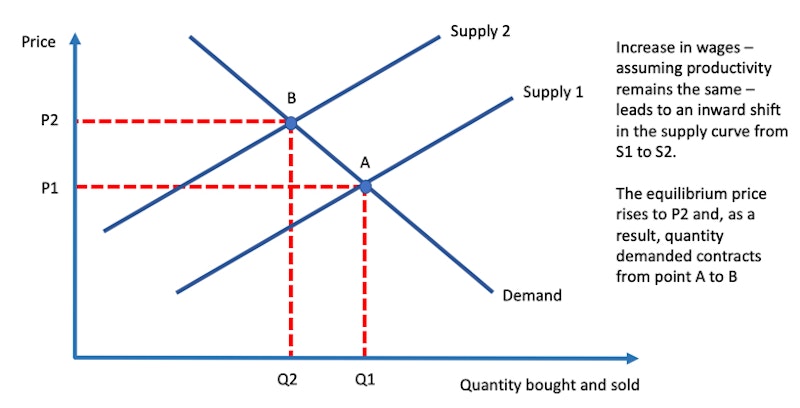Study Notes
How Markets Work - Introductory Market Concepts
- Level:
- AS, A-Level, IB
- Board:
- AQA, Edexcel, OCR, IB, Eduqas, WJEC
Last updated 26 Jan 2019
Some core introductory revision notes on the economics of market activity.
DISEQUILIBRIUM
An imbalance between supply and demand in a market
EXCESS DEMAND
When demand exceeds supply at the current market price – this leads to shortage and puts upward pressure on price
EXCESS SUPPLY
When supply exceeds demand at the current market price – this leads to a surplus and puts downward pressure on price
INCENTIVE FUNCTION OF PRICES
Higher market prices provide an incentive for producers to supply more as they signal the possibility of revenue and increased profits. They might encourage new firms to enter the market
MARKET
Markets are platforms where buyers and sellers come together to determine prices and allocate scarce resources
MARKET EQUILIBRIUM
In equilibrium, there is a state of balance between market demand and supply.
MARKET-CLEARING PRICES
The market-clearing price is a price where quantity demanded, and quantity supplied are in balance meaning no surplus or shortage.
MARKET FORCES
Forces of demand and supply representing the aggregate influence of self-interested buyers and sellers on price and quantity of the goods and services offered in a market.
RATIONING FUNCTION OF PRICES
Whenever resources are scarce, demand exceeds supply and prices are driven up. Higher prices reduce the real purchasing power of someone’s income and discourage demand and help to conserve resources.
SIGNALLING FUNCTION OF PRICES
Changes in market prices send important signals to both consumers and producers. Higher prices signal possible higher revenues and profits for suppliers. Lower prices are a signal to consumers that their ability to buy goods and services has grown.
Draw a diagram to show the effects on the market for a good of an increase in wages (ceteris paribus).
Increase in wages – assuming productivity remains the same – leads to an inward shift in the supply curve from S1 to S2.
The equilibrium price rises to P2 and, as a result, quantity demanded contracts from point A to B

Chain of reasoning - increase in demand
- Market demand for a product increases (ceteris paribus)
- This can be shown by an outward shift of the demand curve.
- An outward shift leads to an increase in the equilibrium market price
- Higher prices reflect that consumers have an increased willingness and ability to pay
- Higher prices then signal producers to expand their supply to meet rising demand leading to
- An increase in the equilibrium quantity bought and sold
Chain of reasoning - increase in supply
- Market supply increases due to a rise in the number of firms / suppliers
- This can be shown by an outward shift of the supply curve
- If supply increases, this will lead to a fall in market equilibrium price
- At lower prices, there is an increase in the real purchasing power of consumer income
- Therefore there will be an expansion along the demand curve leading to
- An increase in the equilibrium quantity bought and sold
Price mechanism
Give two advantages and two disadvantages of allowing the price mechanism to operate without any government intervention:
ADVANTAGES
- Prices send signals that reflect consumer preferences – the market is quicker reflect changing demand
- When making their choices, consumers may not have full and accurate information
DISADVANTAGES
- Price changes act as a signaling device for businesses e.g. higher prices stimulate expanded supply
- Market prices might be high mainly because firms are exploiting their monopoly power
You might also like
Producer support in markets
Study Notes
How Markets Work - Introductory Demand Concepts
Study Notes
Minimum Prices - 2021 Revision Update
Topic Videos
Maximum Prices - 2021 Revision Update
Study Notes

Government Intervention - Is it Time for a Meat Tax?
11th September 2023
